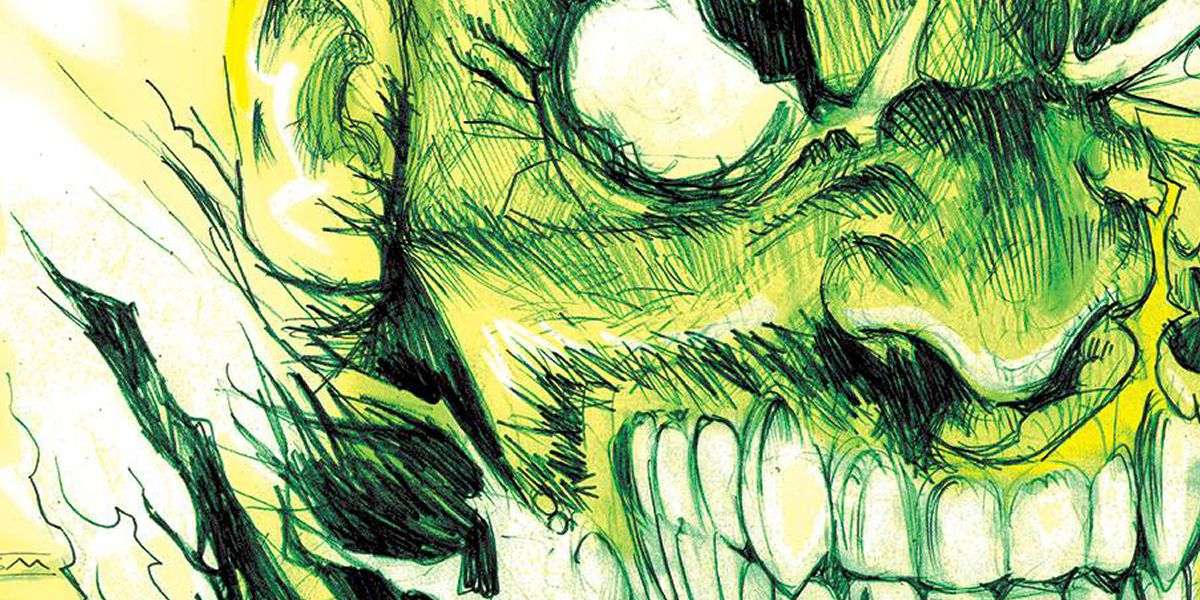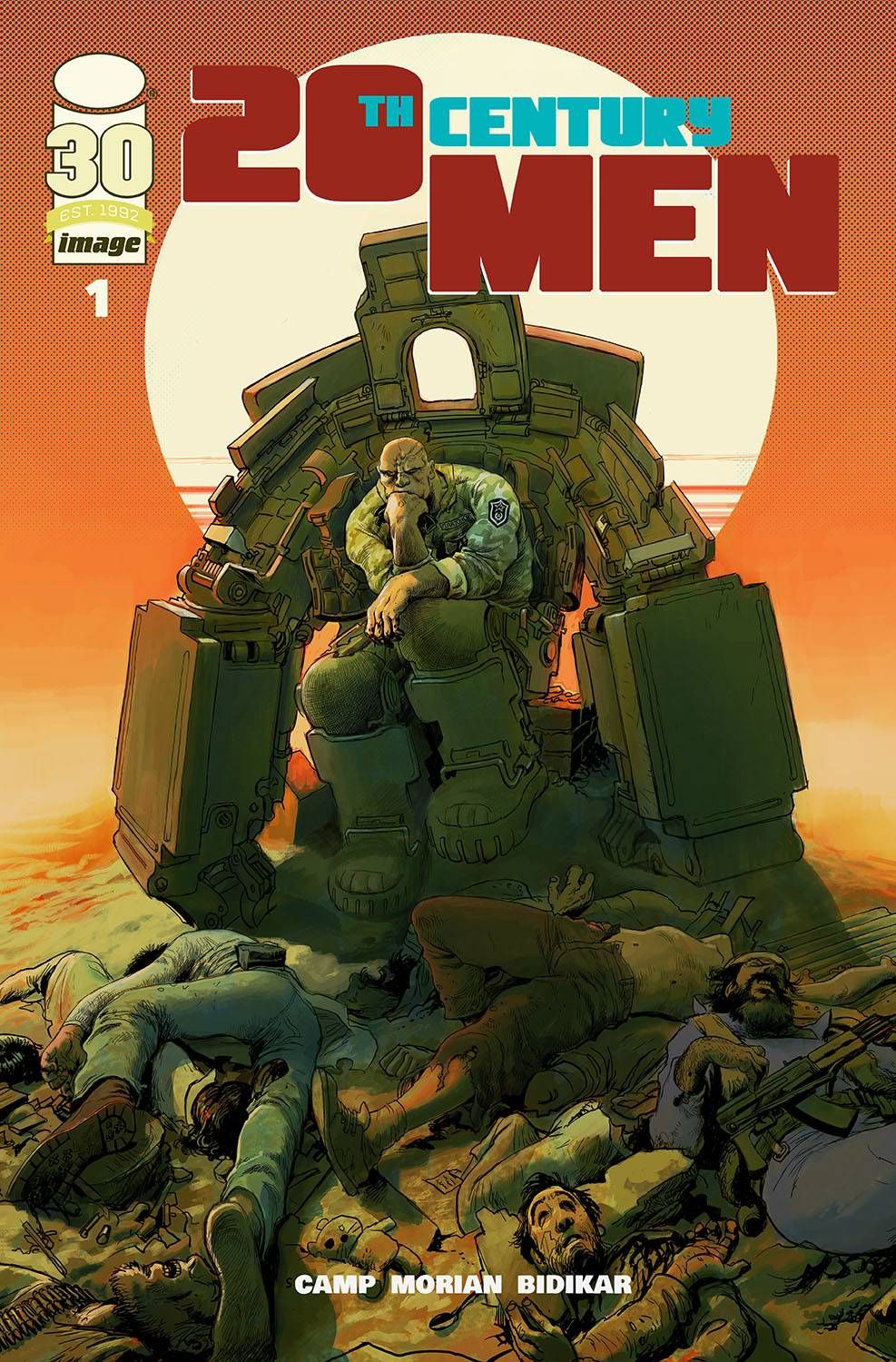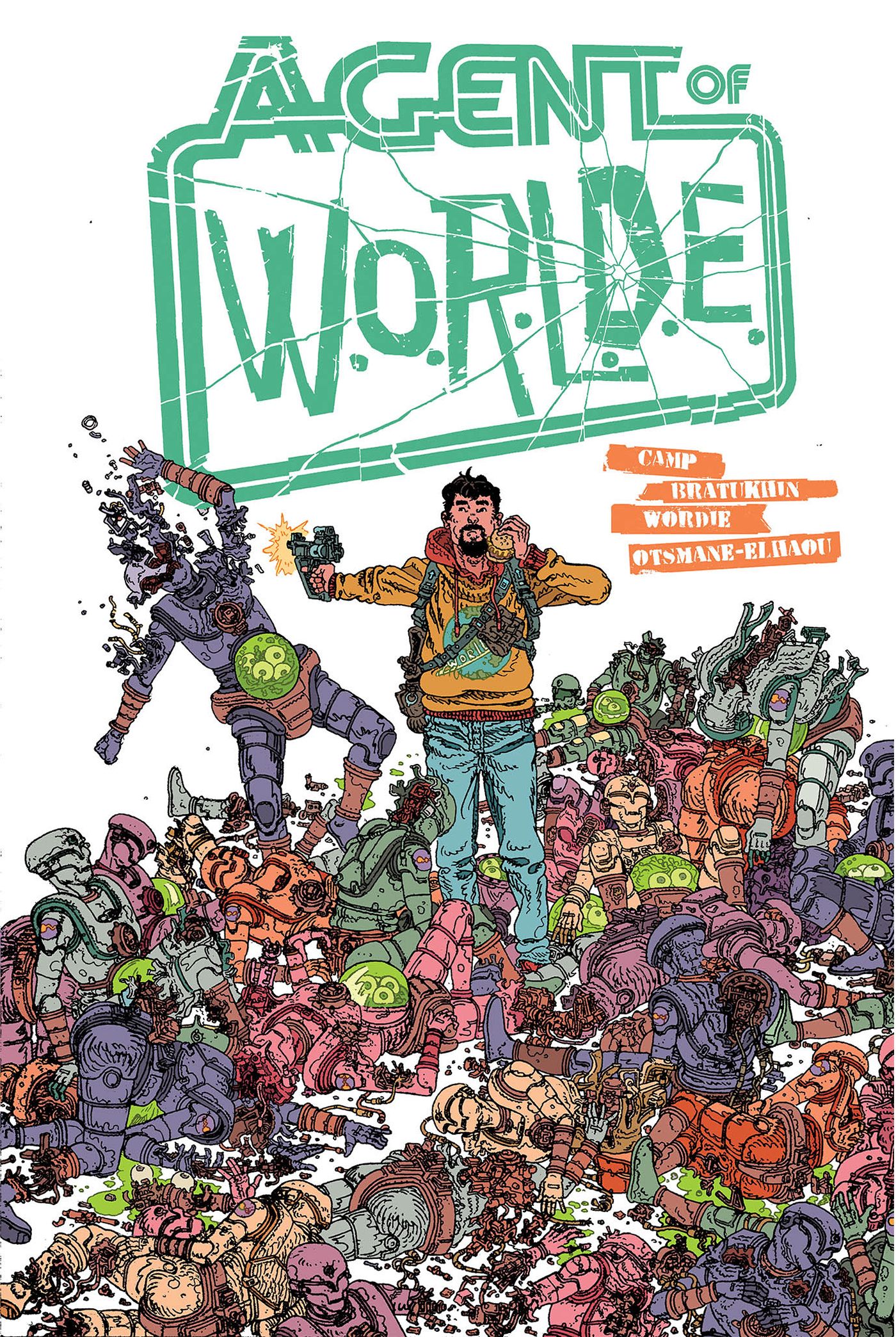In my time writing and editing for CBR, I've had the privilege of reading and covering some incredible comics from creators around the world. Frankly, there are too many well-crafted comics to keep up with, but I'm determined to try, and I want to celebrate the work that excites me. So every month, I'll be bringing you an in-depth career-spanning interview with comics creators who might've slipped under your radar. This month, I'm talking with the prolific Deniz Camp, whose 20th Century Men, Agent of W.O.R.L.D.E, and Bloodshot Unleashed were some of the most fascinating, thought-provoking, and entertaining comics of 2022.
Camp's comics explore human nature, the horrors of war, and the impact of colonialism while pushing the boundaries of the comic medium. He and the artists he works with are creating truly incomparable comics that ought to appeal to even the most cynical collector. In an interview conducted over email, he spoke about his first introduction to the comics world and some of his favorite series. He also discussed his collaborations with artists Stipan Morian, Filya Bratukhin, and Jon Davis-Hunt and detailed his approach to formally inventive, imaginative storytelling.
What first got you into comics? Were there any specific series that made you want to start writing?
As is the case with a lot of creators, comics got me early. I was an immigrant kid growing up in a small town in Michigan, and something about superheroes -- their hidden strength, kindness, and goodness -- appealed to me. I was awkward and nerdy and couldn't figure out how to connect. Superheroes seemed to have some of the same problems but secretly transcended them as I wished I could. It was a specific kind of power fantasy.
Of course, my parents weren't big fans of superhero stuff, so I didn't actually read comics until much later, in my teens. I'd have to buy them with my own money and hide them from my parents (sometimes throwing them out after reading them in some alley), who preferred that I read classics. A lot of my early exposure was from cartoons and reading websites with bios and issue summaries. A highlight of my middle years was having my mom drop me off at Barnes and Noble and leave me there for eight hours. I'd sit and read their entire comics catalog. I remember vividly thinking I liked Justice League comics more than any other comics but not understanding why. Eventually, I figured out that it was the writers and the artists, Grant Morrison and Howard Porter specifically, that determined whether I liked something or not.
What was it about Morrison and Porter's JLA that appealed to you?
What DIDN'T appeal to me? The Morrison/Porter JLA was this incredible blend of big ideas about the nature of right/wrong and heroism, vibrant heroes with personalities that fizzed and crackled, brand-new villains, and inventive, clever action. All with human stakes and mythic proportions.
Howard Porter is such a dynamic artist, a kind of neo-Kirby; everyone was always in motion. Everything was always happening. When someone got punched across the planet, you FELT it.
It was by no means Morrison's best work or my favorite Grant Morrison comic, not even close! But it was the gateway, for me, into a deeper kind of storytelling in comics. And not for nothing; superhero comics should wow you. JLA wows you, man! It leaves nothing on the table. For me, superhero comics rarely get better.
Do you still keep up with superheroes? Are there any contemporary books that excite you?
I don't keep up like I used to. I don't have the time! I think the last ongoing book I followed monthly was Grant Morrison and Liam Sharp's Green Lantern. I do dip in for minis and trades, especially when creators are given some room to take risks. Tradd Moore's Dr. Strange is fantastic, and Hickman's new mutant status quo was very exciting.
Was Maxwell's Demons the first series you wrote?
Yep! I think it was just my second published work. The first [was] a Starlight short in the Millarworld Annual. Maxwell's Demons was my first real attempt at a long-form thing.
This summer, you launched two new series with two incredible new artists. How did you meet and begin working with Filya Bratukhin and Stipan Morian?
Filya and I have been working on this book for years. We met through the internet (which is how I've met so many important people, including my wife!) It was still very early in my career as a comics writer -- around the same time as Maxwell's Demons, to give you a sense of how long we've been working on it. I was figuring out how to make comics and write to the strengths of artists over the course of the book. He's such a genius. It was easy to see what he needed from me and how to keep his interest and give him something he'd be excited about. The book's insanity is born of the insanity of his work.
Stipan reached out to me many years ago, from some of my writing he'd found online, and asked me to help him out on a personal epic he'd been working on for years. I guess he saw some promise in me, but the promise had not yet been realized. I wasn't really up to the task, and it fizzled out. Then a few years ago, I got back in touch to see how he was doing. By that point, I'd written more and had a little more confidence, and we started talking about doing something together -- this time something he was a little less close to. I pitched him the basic proto-concept for 20th Century Men. He said no. But I convinced him anyway, and the rest, as they say, is thistory (not a typo!).
What kind of input do you have on the visual aesthetics of the books? Do you talk with your collaborators about things like character design, or do you leave it up to them?
It varies from artist to artist, depending on what they want. Generally, I have a lot of input, but the final decisions are theirs.
What I try to do, rather than give specifics, is communicate to the artist what I'm going for and what the intention of everything is. What's important about this character? What do we want to communicate through their design? For instance, if a character is a waitress, is it IMPORTANT that she is a waitress? Is that something the audience needs to know? If she's harried and stressed, do we want to give her black circles [or] bloodshot eyes?
I generally create a doc with reference photos for all the major characters and detailed explanations of how I see the character -- stuff that isn't necessarily in the script for the first issue, things that will play a part later, and just backstory as I see it. The goal is always to create a fully realized person recognizable at a glance. That's the work of the artist, but it's my job to effectively communicate what the story needs or respond to what they come up with within the story.
It sounds like Agent of W.O.R.L.D.E and 20th Century Men took a long time to create. How does it feel to finally see them out in the world?
Gratifying! I've been moved and humbled by the response these books have been getting. Think pieces, reviews, DMs, [and] emails. It's been incredible to see people responding to the work. Every person seems to get something different from it, focusing on different parts and reaching wildly different conclusions. It's all exceeded my expectations, and I'm so grateful to everyone who has taken the time to read the books, much less spent money on them or written something about them.
There is no greater compliment an artist can receive than someone responding to the work through criticism, comment, or their own art.
How has working with Valiant on Bloodshot Unleashed compared to your experience with creator-owned work?
Pretty different. When you're taking on a character that already exists, there are all sorts of limits and expectations you need to be aware of. Writing creator-owned, I have almost unlimited options. I guess I could make [Bloodshot] a comedy book or a meditative, multi-generational drama, but I don't think that's the best use of the character. So the process of writing an already existing character begins with research and analysis. What is this character about, what are the elements of them and their world, why has this character endured over decades, [and] what is the appeal? Then, how does that resonate with my interests and obsessions? And from there, you build.
We don't own the characters, and you have to be aware of that. That said, every project I do, I take on as if it were a creator-owned book. I like to be involved in every part of it and to create a supportive, exciting environment for people to do their best work. I want to make sure that every piece of work I'm a part of is as good as it can be -- as interesting, heartfelt, and innovative as possible.
In all of your series, each issue stands on its own as a solid piece of writing. What comes first, the structure of the story as a whole or the structure of the individual issues?
It's all sort of the same thing, I think.
I try to take it sentence by sentence, honestly. Is each sentence as interesting and beautiful as I can make it? Does it, when paired with the sentence just before, do something surprising, delightful, [or] shocking?
Whether it's 1 page, 5 pages, 20 pages, or 300 pages, I want to make sure that I'm giving people a beginning, middle, and end at all times. That's the fundamental proposition. Even [individual] scenes should have a beginning, middle, and end. In some of the great comics, every PAGE has a beginning/middle/end structure to it. The mind craves that, I think. It makes a little light go off in our brains.
That sentence-by-sentence approach comes through in your work. How much changes from your original scripts to the final product?
This again depends on the project. On 20th Century Men, a ton. On Bloodshot, less so. I obsess over every word for all my projects, though. I think that's the least I owe my collaborators, who put so much time, energy, and creativity into their work, and our readers, who spend their hard-earned money and limited free time on our books.
It's a joy! I love doing it. I love playing with permutations, making sure it's just right, not just for the moment or the scene, but for the characters. Only for writers is it acceptable to hear voices. [In] any other profession they'd make you see a psychiatrist!
Can we talk a little about Agent of W.O.R.L.D.E #3? It can be read both forward and backward. What was writing that like? Did this approach change the way you and the rest of the team worked together?
Yeah, it changed it quite a lot, which was one of the great joys of it! Scripting it meant that surprise kind of works in reverse. Which is to say, if someone is reading it in the normal way (page 1 to page 20), the page turns bring us to what came BEFORE, not what comes after. Instead of making readers wonder what happens NEXT, it's structured to make people wonder, "What exactly happened to get us HERE?" In other words, "What will I find on the next page?."
Figuring that out is a real joy and a terrible struggle. That's what attracts me to this work.
When we first talked about 20th Century Men, you hinted that Aditya Bidikar has to "almost completely reinvent the way lettering is done" in Issue #4. Can you talk a bit more about that?
Yeah! That was one of the most challenging issues I've ever been a part of, but I'm really proud of it. The issue is called "The Battle of Beaux Arts," and it's one big battle, told visually and through a series of excerpts from fictionalized accounts of the battle. Each account [has] a different voice and perspective (American, Russian, Afghan). The quotes echo each other and the events depicted in the art. Hopefully, the distinct voices, going back and forth, create a kind of symphonic quality -- a music.
The goal was to give the battle a feeling of world-historical importance that was open to interpretation, reinterpretation, mythologizing, and misinformation.
I knew that with four textual layers of information on top of the visual layer of information, I knew that I wanted to make it clear at a glance where the excerpts were coming from, even without the attributions. Aditya and I brainstormed a few options, and he ultimately came back with our solution; each "book" getting its own style, with two different sizes depending on the kind of scene it was a part of, with the text sometimes in flat boxes, sometimes directly on the page, threaded through the action and becoming an intensely graphic element.
The result is something really special.
But it's not just Aditya. Stipan and I also had to talk about how to do this [and] what it meant that there would mostly be no dialogue. The art had to be crystal clear. Even without the commentary, the reader had to be able to follow it all without the captions. Stipan is so great at page design and having characters emote that I knew he'd be up for the challenge, and he was.
Everyone came together to make that issue in a way that no other team could have, I think.
When you're doing these sorts of formal experiments, how much of a plan do you have, and how much do you leave up to your collaborators?
I plan a lot on my own and then talk a lot with my collaborators to make sure it's possible and a challenge they might enjoy. Whenever I'm asking everyone to do something new, I make sure I have a pretty detailed plan on how it's going to work, with layouts, examples, copious notes, and "extra" info. I spend a lot of time thinking about these things, probably too much, but ideas are cheap; it's the execution that's difficult. I rely on my collaborators to make it work.
You're about to wrap up Agent of W.O.R.L.D.E, Bloodshot Unleashed, and 20th Century Men. Can fans look forward to seeing more from any of these series in the future? What are you working on next?
At least for now, we'll be taking a break from all of them.
For Agent of WORLDE, Issue 4 should be out soon. Issue 5, the first of a second arc, has been drawn, and we'll be continuing in some form or another, but it could be a while before it's ready.
[For] 20th Century Men, Stipan and I have already started our next project, something completely different, but if there is interest, we have plans to go back to these characters one day. I've written a ton of stuff that didn't make it into the final comic, and we both love them and would like to explore the characters more.
Of course, both of those and Bloodshot Unleashed will be getting collected editions later this year (20th Century Men's collection arrives in May). For new projects, I have a couple of creator-owned projects in the works and a mini featuring characters you've probably heard of. All of that will be later in the year/early next year.
The Final Order Cutoff for 20th Century Men #6 is today, Jan. 30. The issue is due out on Feb. 22.







